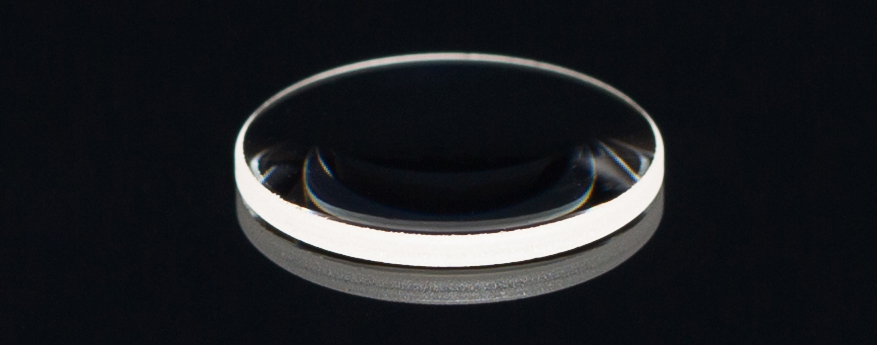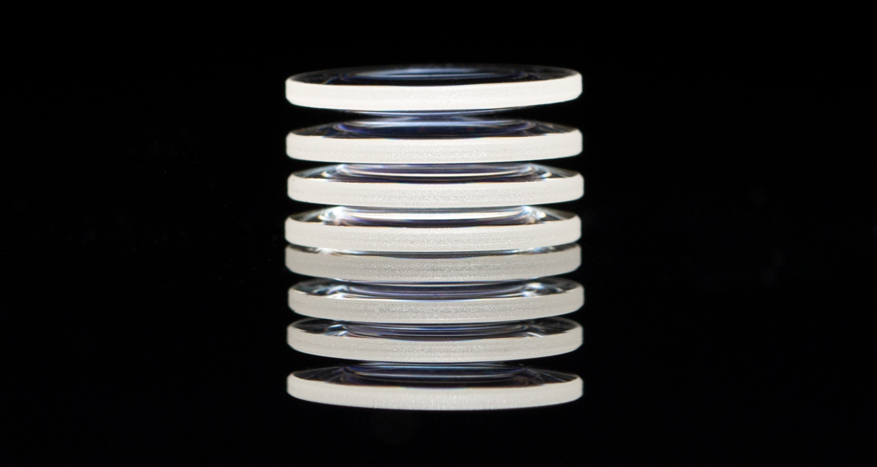Optical lens:
Convex lens (thick in the middle and thin on both sides);

Concave lens (thick in the middle and thin on both sides);
The effect of the lens on light:
1. Convex lens has a converging effect on light:
Convergence is manifested in that the refracted light is closer to the main optical axis than the incident light, and only the light parallel to the main optical axis will converge to a point (focus) after being refracted;
2. The concave lens has a divergent effect on light:
Divergence occurs when the refracted ray is farther from the main optical axis than the incident ray.
Judging method of lens properties:
Extend the incident ray, if the refracted ray has a converging effect on the inside of the extension line of the incident ray, it is a convex lens. Conversely, if the refracted light is outside the extension line of the incident light, it is a concave lens.
Three special rays:
1. The light passing through the optical center does not change the reverse direction.
2. The light parallel to the main optical axis is refracted and then deflected to the thick side of the lens to pass the focus (or the reverse extension line passes the virtual focus of the concave lens).
3. The light rays emitted from the focus (or towards the virtual focus) are refracted and parallel to the main optical axis.
Concave lens imaging:
1. (Concave lens can only form an upright reduced virtual image no matter where the object is, and V<U) (!) When the object is beyond the double focal length (U>2f), it forms an inverted, reduced real image (image distance: f< v < 2f), such as a camera;
2. The object is between the focal length and twice the focal length (f < u < 2f), forming an inverted, enlarged real image (image distance: v < 2f). Like a slideshow.
3. The object is within the focal length (u<f), forming an upright, enlarged virtual image. like a magnifying glass.

Convex lens imaging law:
1. The focus F is the boundary between the real image and the virtual image, and U>F outside the focus becomes a real image. When the object is in focus, U<F becomes a virtual image.
2. The double focal length is the dividing point between magnifying and reducing the real image. The object is at 2F, and the image is also at 2F. At this time, the distance between the object and the image is the closest. U+V=4F.
3. The real image is always upside down, and the object and image are on both sides of the lens and the main axis, which can be seen or displayed on the screen. The virtual image is upright, behind the object, on the same side of the lens and the main axis, and can only be seen with the eye. No matter the real image or the virtual image, the three points of the object point like the light center are collinear.
4. When a real image is formed, the object is close to the lens, the image is farther away from the lens, and the larger the distance, the larger the image. (things advance like retreat, move in the same direction). When a virtual image is formed, the object is far away from the lens, the image is also far away from the lens and the image becomes larger, and the object is close to the focal point and the image is the largest.
5. The real image is upside-down and left-right reversed. The virtual image remains unchanged up and down, left and right. Image magnification: K=V/U=H image/H object.
Lens application:
1. Slide projector: the lens is a convex lens, the object (slide) is placed between 1F and 2F, and an inverted magnified real image is formed on the screen. To enlarge the image, move the object closer to 1F while moving the screen away from the lens (the object advances and the image becomes larger).
2. Magnifying glass: When the object is within 1F, it will form an upright magnifying virtual image. To make the image larger, move the object away from the lens (closer to the inside of 1F). Use a magnifying glass to look at your fingerprints. If you want to look like your fingerprints, keep the magnifying glass away from your fingers when your hand is still. Fingers are close to 1F.
3. Microscope: It consists of two convex lenses with different focal lengths. The objective lens has a short focal length and the eyepiece has a long focal length. When the object is between 1F and 2F, the objective lens first forms an inverted magnified real image, the image as the eyepiece falls in the eyepiece 1F, and the eyepiece secondary magnifies the virtual image to enlarge the virtual image to enlarge the virtual image to enlarge the virtual image.
4. Telescope: The objective lens has a long focal length and the eyepiece has a short focal length. First, the objective lens forms a reduced real image, and then the eyepiece forms a magnified virtual image. The image is smaller than the object but moved closer.
5. Camera: The lens is a convex lens, and the lens with a long focal length has a larger image. If the image of a single person is large, the camera should be close to the person, and the lens should be rotated out to increase the distance. Group shots should keep the lens away from people, while screwing in the lens to reduce distance. If the real image is not in the center of the viewfinder frame, when the object does not move, the moving direction of the lens is the same as the moving direction of the image.
6. Myopia: the lens becomes convex, the focal length is shortened, the convergence effect is enhanced, the image is in front of the retina, and the distant objects cannot be seen clearly. The photopic distance is less than 25cm, and a concave lens should be worn. (Wearing a concave lens can make the eyeball converge, the focal length becomes longer, and the image moves backwards).
7. Hyperopia: the converging effect of the flat lens becomes weaker, the focal length becomes longer, the image is behind the retina, and the near objects cannot be seen clearly. (Wearing a convex lens can increase the convergence of the eyes, shorten the focal length, and move the image forward to the retina).
The Warm Promise Behind Christmas Eve Gifts
Dec. 24, 2025
We are looking forward to establishing long-term cooperative relations with customers around the world on the basis of trust and mutual benefit. Please feel free to contact us for further information. We sincerely welcome you to our factory.
Copyright © Jiangxi High-Resolution Optoelectronic Co., Ltd. All Rights Reserved | Sitemap